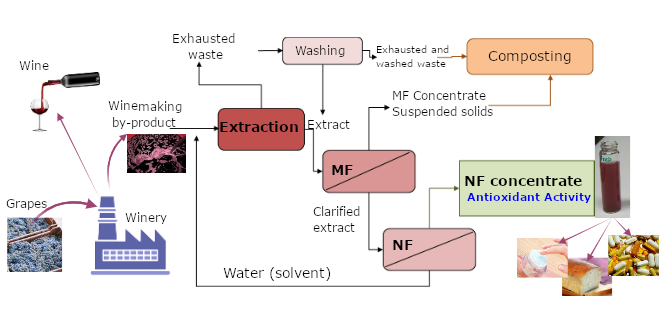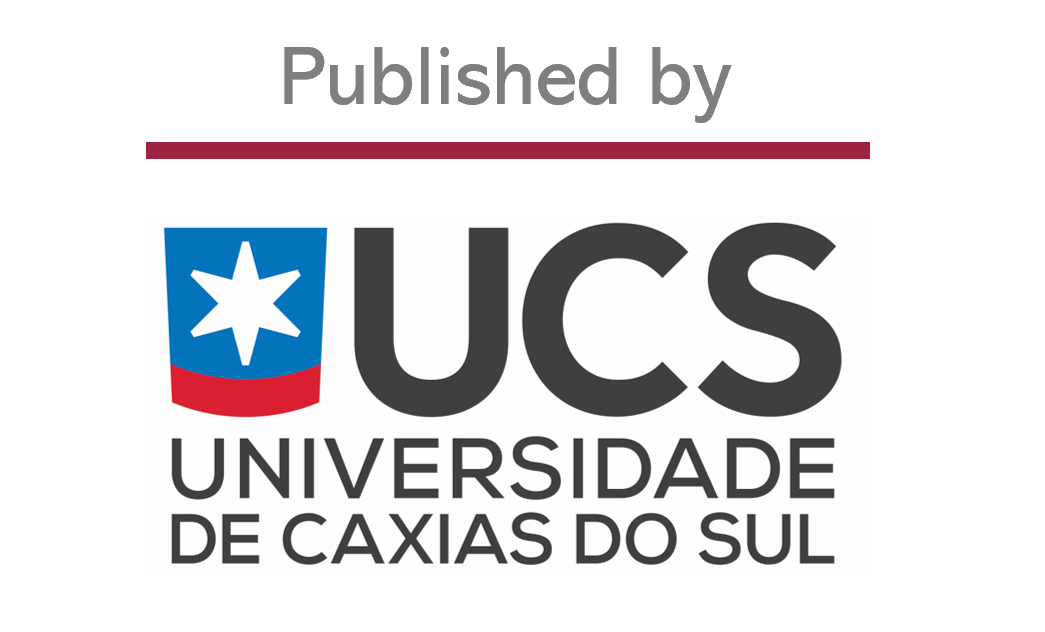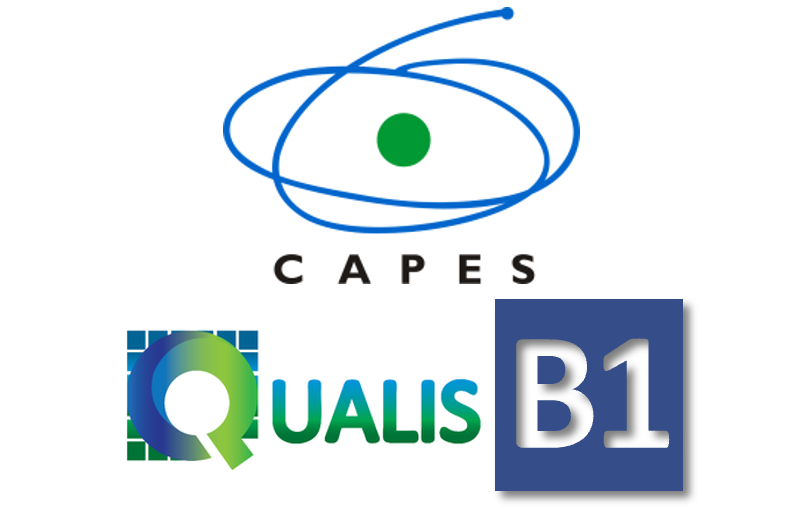Recovery of antioxidant compounds from wine lees using membrane technologies
DOI:
https://doi.org/10.18226/23185279.e251422Keywords:
Anthocyanins, circular economy, membranes, nanofiltration, phenolic compounds, wine by-productsAbstract
Considering the substantial volume available and the high concentration of antioxidant compounds in wine lees composition, the present work investigated the use of this winemaking by-product as a raw material for the recovery of anthocyanins and other phenolic compounds. This study explores a process that includes an aqueous extraction step of the antioxidant substances from wine lees, followed by microfiltration to remove suspended material, and a nanofiltration step, resulting in a concentrate rich in anthocyanins and other phenolic compounds. The final product consists of an extract concentrated in natural antioxidant compounds with high antioxidant activity and presenting potential to be used in formulations of pharmaceutical, cosmetic and food industries. The process presented is grounded on sustainability, using eco-friendly solvents and clean technologies, aligning with the principles of circular economy and adding value to wine industry by-products.

Downloads
Published
How to Cite
Issue
Section
License
Copyright (c) 2025 Alexandre Giacobbo, Andréa Moura Bernardes, Maria Norberta de Pinho

This work is licensed under a Creative Commons Attribution 4.0 International License.
Declaração de originalidade e cessão de direitos autorais
Declaro que o presente artigo é original, não está sendo tendo sido submetido à publicação em qualquer outro periódico nacional ou internacional durante o processo de revisão. Através deste instrumento, em meu nome e em nome dos demais co-autores, porventura existentes, cedo os direitos autorais do referido artigo à revista SCIENTIA CUM INDUSTRIA. Contudo, a reprodução total ou parcial impressa ou eletrônica pode ser feita desde que o autor comunique oficialmente à revista. Declaro estar ciente de que a não observância deste compromisso submeterá o infrator a sanções e penas previstas na Lei de Proteção de Direitos Autorias. Declaro estar ciente de que a não observância deste compromisso submeterá o infrator a sanções e penas previstas na Lei de Proteção de Direitos Autorias (Nº9610, de 19/02/1998).




